|
Jared Diamond, Guns Germs and Steel, Collapse |
|
|
|
|
|
Jared Diamond Biography
Known primarily for his research into the evolution of human societies from a biological and geographic point of view, Jared Mason Diamond was born on 10 September 1937 in Boston, Massachusetts. He earned an A.B. degree from Harvard University in 1958, and a Ph.D. in physiology from Cambridge University in 1961. Diamond was a Junior Fellow at Harvard from 1962 to 1966, at which point he became a professor of physiology at the UCLA Medical School. He developed a level of expertise at that time in the ecology and evolution of birds in New Guinea, making many trips to that island and region. In fact his early books dealt with the subjects of ornithology, New Guinea, ecology and evolution. By 1997 he had transferred to the UCLA Department of Geography, where he has focused on biogeography and human society. In that same year his landmark work was published—Guns, Germs, and Steel—for which he received the Pulitzer Prize. This book dealt with the rise and fall of societies, and is discussed in more detail to the right. That major work was followed in 2005 by Collapse, which looked in more detail at the fall of societies, paying particular attention to the environmental contribution to these denouements. His broad interests have led him to write articles on a number of subjects, including the QWERTY typewriter keyboard system and ethnic differences. Diamond has received many other professional awards in addition to the Pulitzer Prize, including a MacArthur Foundation "Genius" Grant in 1985. He speaks twelve languages, including English, Latin, French, Greek, German, Spanish, Russian, Finnish, Fore (spoken in New Guinea), New Melanesian, Indonesian and Italian. Diamond is a member of the American Philosophical Society, the American Academy of Arts and Sciences, and the National Academy of Sciences. He is U.S. regional director of the World Wildlife Fund, and serves on the editorial board of Skeptic Magazine.
Jared Diamond in the field Submit reviews or other new information to be posted here.
|
Jared Diamond's Books, Articles and other Works Study of the rise and fall of civilizations had fallen out of favor with some scholars, until Diamond's work reinvigorated this field. The primary complaint with earlier works was that they seemed to over-simplify in order to reach broad conclusions about many different societies. The counter-complaint was that many scholars became so specialized in their studies that the larger context could become lost. Diamond's work was a welcome blending of the two positions. He focused on specific societies, many of which were often overlooked by "Western civilization" studies. From these he has been able to draw insightful observations about the rise and fall of societies. --- Francisco Pizarro seizing the Inca Emperor Atahuallpa Painting by John Everett Millais (1846) |
|
Guns, Germs, and Steel The Fates of Human Societies Guns,
Germs, and Steel addresses the rise
and fall of societies around the world. Its broad scope extends from the
end of the most recent Ice Age— 13,000 years ago — to the present day.
That seemingly impossible task is accomplished remarkably well and has led
to many honors being bestowed upon this work. It begins with Diamond asking
“Why did wealth and power become distributed as they are now, rather
than in some other way?” To illustrate the question, he notes that
Francisco Pizzaro of Spain captured Atahuallpa, the Inca emperor in Peru
in 1532. Why did it not happen the other way around, with Atahuallpa
sailing to Spain at the head of his own soldiers to capture the Spanish
king? There follows the exploration of conditions which conspired to
produce dominance by people of some parts of the world over others. It
is unfortunate that racial considerations have often been cited to explain
these differences of development which put power into the hands of people
from Europe and western Asia. Yet Diamond notes, among other indicators,
that repeated IQ testing has not shown a superiority by western Europeans.
After examining a number of possible causes, Diamond concludes instead
that “History followed different courses for different peoples because
of differences among people’s environments, not because of biological
differences among peoples themselves.” Critical
interaction with the environment included the domestication of plants and
animals. Then, since some regions produced food more abundantly than
others, significant differences began to form. The areas producing surplus
crops allowed individuals to pursue specialized work, leading to the
development of writing, the working of metals, and advances in weaponry
leading to guns. Yet they also produced an unintended biological weapon.
The close proximity of many people and domesticated animals led to the
development of ever more potent germs. When
explorers and soldiers set out from Europe around the year 1500 to begin
their discoveries and conquests, the lethal germs they brought with
them—many centuries in the making—were said to have killed more people
in Africa, the Americas and Asia than the total killed by their weapons.
The decimated local populations were unable to resist effectively, and the
conquests were carried out. It was this combination of elements which led
him to describe this whole process as involving guns, germs and steel. In addition to this broad brush treatment, Diamond also examines a number of societies in detail, noting why some rose to higher development and power, while others did not. This framework has been well received by experts in a large array of disciplines. Review by Sanford Holst Diamond, Jared Guns, Germs, and Steel: The Fates of Human Societies (New York: W.W. Norton) 1997 ISBN: 0-393-06131-0 (hardcover) ISBN: 0-393-31755-2 (paperback) |
|
|
Collapse How Societies Choose to Fail or Succeed In Collapse, Diamond goes on to further examine
the failure of societies, which he defines as “a drastic decrease in
human population size and/or political/economic/social complexity, over a
considerable area, for an extended time.” While Diamond discovers other factors also play a
role, he returns most often to the environment as a primary cause. In that
search he finds twelve ways in which societies self-destructed by
destroying their environment. This is colorfully described as ecocide, and
includes: deforestation and habitat destruction, soil problems (erosion,
salinization, loss of fertility), water management problems, overhunting,
over fishing, introduced species harming local species, human population
growth, increased impact per person, and more recently: human-caused
climate change, toxic chemicals, energy shortages, and human full use of
photovoltaic capacity. He expands beyond the environment by noting several
other contributing factors as well. “Eventually I arrived at a
five-point framework of possible contributing factors that I now consider
in trying to understand any putative environmental collapse.” Those five
points were environmental damage, climate change, hostile neighbors,
friendly trade partners, and the society’s response to its environmental
problems. Diamond than considers a range of societies on
different continents, some of which have thus far been successful, and
others which have collapsed. Each of them is evaluated in terms of those
five points to bring out subtle differences in their actions and
results. Included in these societies are Montana agribusiness representing
heartland USA; the Anasazi culture in the old American Southwest; the Maya
in Central America; Greenland’s Norse and Inuit societies; Easter,
Pitcairn, Henderson and Tikopia Islanders in the Pacific; New Guinea
highlanders; the Tokugawa culture of Japan; Hutu and Tutsi societies in
Rwanda; the Dominican Republic and Haitian societies on Hispaniola Island;
the Chinese and Australian societies in the Far East. He summarizes his findings as encompassing “Societal
collapses involving an environmental component, and in some cases also
contributions of climate change, hostile neighbors, and trade partners,
plus questions of societal responses.” These considerations are then applied to the world in which we live today. A concern is expressed that global collapse could occur within the next few decades based upon environmental and other problems observed. He notes societies have become more interconnected around the world, which means the collapse of one is now affecting others located far away. Conversely, distant societies might now have a significant impact on whether a particular local society survives or collapses. Review by Sanford Holst Diamond, Jared Collapse: How Societies Choose to Fail or Succeed (New York: Viking) 2005 ISBN: 0-67003337-5 (hardcover) ISBN: 0-14-303655-6 (paperback) |
|
|
The Third Chimpanzee The Evolution and Future of the Human Animal Diamond, Jared The Third Chimpanzee: The Evolution and Future of the Human Animal (New York: HarperCollins) 1992 ISBN: 0-06018307-1 (hardcover) Republished: Diamond, Jared The Third Chimpanzee: The Evolution and Future of the Human Animal (New York: Harper Perennial) 2006 ISBN: 0-06084550-3 (paperback) |
|
|
Additional Books Guns, Germs, and Steel Reader's Companion ( ) 2003 The Birds of Northern Melanesia: Speciation, Ecology, and Biogeography (with Ernst Mayr) (New York: Oxford University Press) 2001 Why is Sex Fun? The Evolution of Human Sexuality ( ) 1997 Birds of New Guinea (with B. Beehler, T. Pratt, D. Zimmerman, H. Bell, B. Finch, J. Coe) (Princeton, NJ: Princeton University Press) 1986 Community Ecology (with T.J. Case) (New York: Harper and Row) 1986 The Avifaunas of Rennell and Bellona Islands (published in) The Natural History of Rennell Island, British Solomon Islands (Copenhagen: Danish Science Press 8:127-168) 1984 Ecology and Evolution of Communities (editor, with M.L. Cody) (Cambridge, MA: Belknap Press of Harvard University Press) 1975 Avifauna of the Eastern Highlands of New Guinea (Cambridge, MA: Nuttall Ornithological Club), 1972 |
|
|
Other Publications Selected Articles "What's Your Consumption Factor?" The New York Times (January 2), 2008 "Japanese Roots" Discover (June) 1998 "The Curse of QWERTY" Discover (April) 1997 "Race Without Color" Discover (November) 1994 "Curse and Blessing of the Ghetto" Discover (March) 1991 "The Worst Mistake in the History of the Human Race" Discover (May) 1987 "Ethnic differences. Variation in human testis size." Nature (April 320/6062) 1986 Video "Guns, Germs, and Steel" PBS (3 part, 3 hour documentary), 2005 |
|
|
© 2009-2024 sholst |
|


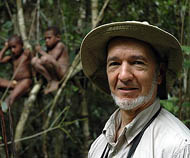


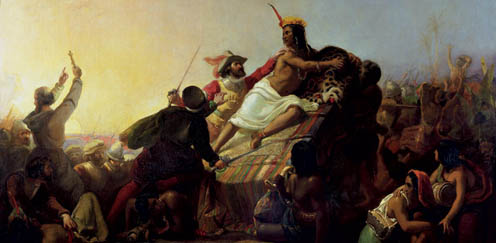
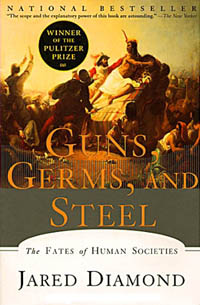 |
|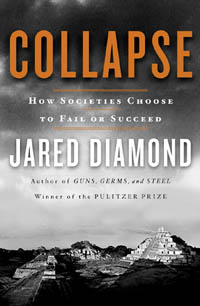 |
|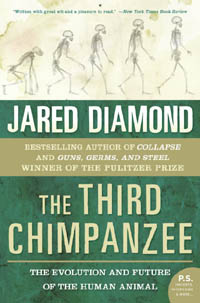 |
|